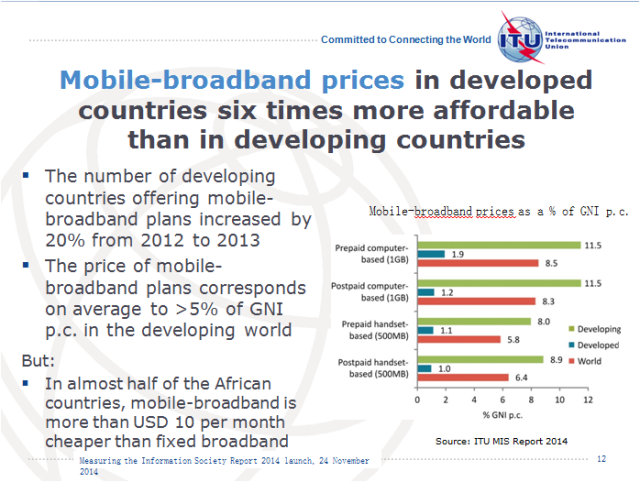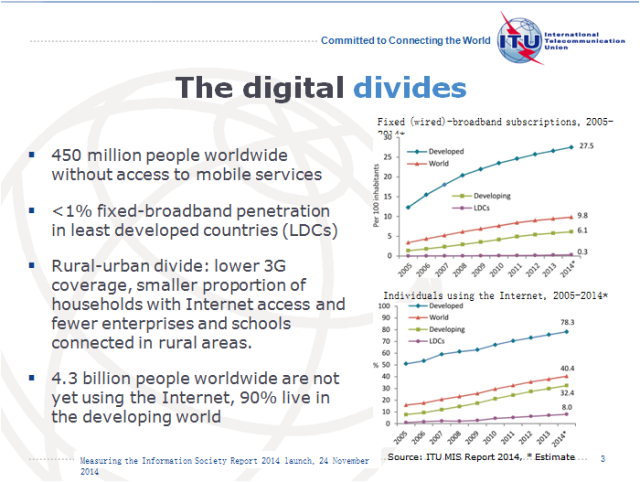ITU today said mobile broadband is six times more affordable in developed countries than in the developing world.
The report said developing countries have witnessed the steepest price drop, with average prices declining 20 percent year-on-year.
During 2008-2013, entry-level fixed-broadband prices dropped 70 percent globally. Over the same period, the standard entry-level broadband speed has risen from 256kbps to 1Mbps.
Internet users rose 6.6 percent globally in 2014 — 3.3 percent in developed countries and 8.7 percent in the developing world – to over 3 billion.
The number of Internet users in developing countries has doubled in five years between 2009 and 2014, with two thirds of all people online now living in the developing world.
Of the 4.3 billion people not yet using the Internet, 90 percent live in developing countries. In the world’s 42 Least Connected Countries (LCCs), which are home to 2.5 billion people, access to ICTs remains largely out of reach, particularly for these countries’ large rural populations.
By end 2014 there will be seven billion mobile subscriptions, roughly corresponding to the total global population. Nearly 450 million people worldwide live in places which are still out of reach of mobile cellular service.
Developing nations’ share of total global international bandwidth increased from 9 percent in 2004 to over 30 percent today. Lack of sufficient international Internet bandwidth in many of the LCCs remains an important barrier to ICT uptake in these countries, and often limits the quality of Internet access.
Denmark ranked Number One in ITU’s ICT Development Index (IDI), a composite measurement that ranks 166 countries according to their level of ICT access, use and skills. It is followed by the Republic of Korea.
The IDI top 30-ranking include countries from Europe and high-income nations from other regions including Australia, Bahrain, Canada, Japan, Macao (China), New Zealand, Singapore and the United States. Almost all countries surveyed improved their IDI ranking this year.
By the end of this year, almost 44 percent of households will have Internet access at home, up from 40 percent last year and 30 percent in 2010. In the developed world, 78 percent of households now have home Internet access, compared to 31 percent in developing countries, and just 5 percent in the 48 UN Least Developed Countries.
Many industrialized nations having already reached 100 percent school connectivity. In developing countries substantial progress has also been made.
Worldwide, 10 percent of post offices offer public Internet access, despite the fact that 20 percent of post offices globally have a broadband connection.








